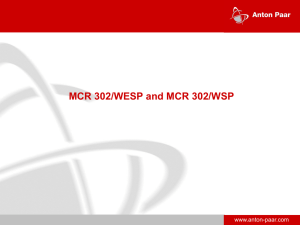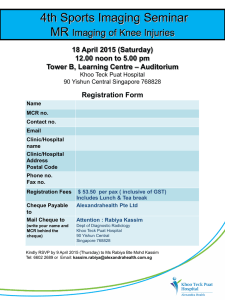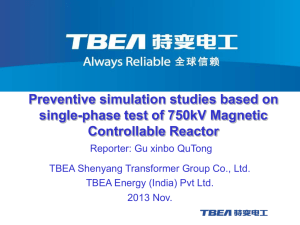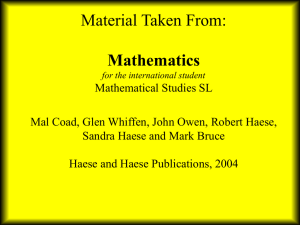Folie 1 - Rheology
advertisement
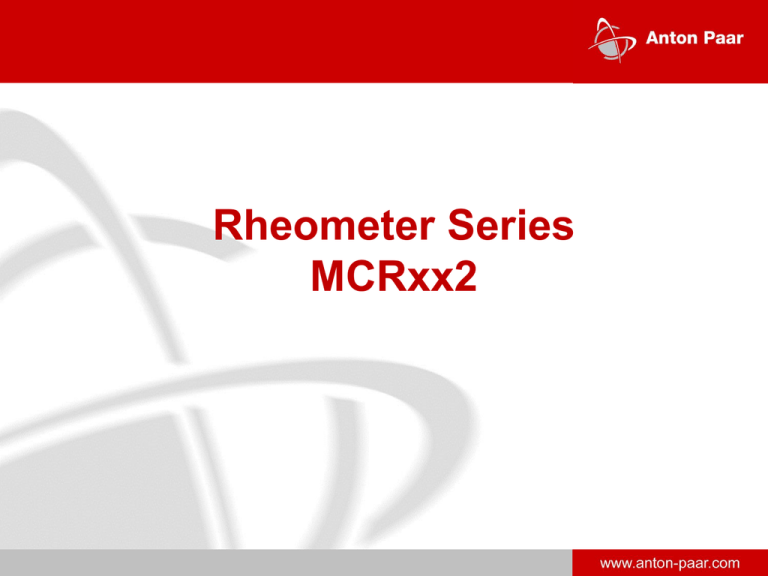
Rheometer Series MCRxx2 www.anton-paar.com MCR History: Evolution to Revolution Time UDS 1995 2 MCR xx0 1999 MCR xx1 2004 MCR xx2 2011 Time Line Anton Paar Rheometer at Customer Side UDS MCR500 MCR301 3 History: Evolution of Anton Paar Rheometers MCR xx0 1999 2004 MCR xx1 2011 MCR xx2 UDS 200 1995 Innovations - First EC-Motor Rheometer - Fully digital instrument (DSP Technology) - Graphite air bearing - Patented normal force sensor - Quick-fitting coupling Introduction of the modular concept 7 Temperature control systems 4 Special Accessories 4 Innovations - Direct Strain Oscillation (DSO) - Introduction of torque mapping - Patented Peltier Hood (H-PTD) - Patented Cylinder Temp. control - First Magneto- and Electrorheological devices - First Immobilisation cell - Automatc Sample Changer (ASC) Improvements - Improved EC Motor technology (min. torque: 20 nNm) - State of the art DSP-Technologie - Air bearing and normal force improvements Extension of the modular concept 11 Temperature control systems 11 Special Accessories Innovations - ToolmasterTM - TruGapTM - LAN Interface - CTD450 with Digi Eye - First Rheo-SALS System - First Interfacial Rheology System - First Tribologie System - High Throughput Rheometer HTR Improvements - Improved EC Motor technology (min. torque: 10 nNm) - Temperature stabilisation of air bearing and normal force sensor - Space-saving instrument concept and innovative design Extension of the modular concept 12 Temperature control systems 16 Special Accessories The Slogan for the MCR Series: Your Future-Proof Rheometer What does this slogan mean? New high-end rheometer platform employing state of the art technology for all today´s and future applications Continuous firmware development ensures performance improvements and new functions over the life time of the MCR xx2. The accessories for the former MCR as well as all new accessories can be used in the new MCR rheometer series. … and now the technical details 5 The Future Proof Rheometer What is new in the MCRxx2? The new MCR xx2 features a totally new electronics and mechanical design and relies on the further improved core components such as EC-motor, air bearing and normal force sensor. Development targets 1) Fill the foot steps of the MCRxx1 (Release Status) First step ensures MCRxx1 performance on the MCRxx2 platform and some unique new additional features. Since there were constantly small improvements in the MCRxx1 the last specifications were to conservative. Therefore the MCRxx2 specifications are better compared to the MCR xx1 specs. 2) 6 New platform which can grow with further needs from customers. Instrument Shape of MCR xx2 Series MCR Series with 4 instruments: MCR 52 (ball bearing) MCR 102 (air bearing) MCR 302 (air bearing) MCR 502 (air bearing) MCR 52, 102, 302 look similar MCR 502 higher frame larger flange 7 MCRxx2 - EC-Motor, Motor Controller, Electronics Innovations of MCR xx2 TruRateTM (new) TruStrainTM (new) TruGapTM and CTD boards included Digital current sources T-ReadyTM (new) New faster electronics 8 Characteristics of the EC-Motor Known and constant magnetic field Fast and accurate control routines Instantaneous availability of the magnetic field and the torque, i.e. no time lag due to induction Extremely fast response times. Controlling of very small speeds at small torques. Oscillation at higher frequencies No induction needed: No eddy currents. No heat production on the rotor- No change in motor characteristics. High torques for long times possible (300 mNm). Linear relationship between the electro-magnetic torque and the stator current( M I): Only one motor constant for calibration Almost no dependence on the type of geometry, i.e. no difference between small low inertia and large high inertia geometries. 9 Air Bearing / Normal Force Air bearings Axial bearing centers the shaft Radial bearing holds the rotating part Constant high quality (less variation) of air bearings due to improved manufacturing process MCR502: Temperature stabilisation of the air bearing increases the lifetime of motor adjustments and reduces drifts in normal force. Normal Force Measurement Patented normal force sensor in the air bearing measures the natural deflection of rotor when measuring system is pushed or pulled by an electrical capacity method. Benefits: Large NF range with high resolution NF measurements in fast transient measurements Measurement in the air bearing NF available for all environmental systems and accessories NF is no extra option or accessory 10 Radial Bearing Normal Force Sensor Axial Bearing Performance MCR xx2 Normal Force, TruRateTM, SRM2490 4 6 10 CSRTest, TruRateTM CP25-4, P-PTD200, 25°C Shear rate: 0.001 to 100 Measurement point duration. 100 to 1 s (log) Averaging: Automatic 1 10 10 N Pa m Pa·s 0 10 3 10 5 10 -1 10 SRM 2490 Flow curve 2 N1 10 FN -2 10 4 10 1 10 Min Normal Force: 10 0.0028 N 0 10 3 10 -4 -3 -2 10 10 10 -1 0 1 2 10 10 101/s 10 Spec values: Normal Force Range: 0.005 to 50 N 11 -3 10 3 FN N1 Normal Force Sensor MCR52 High normal forces when occurring during gap loading of highly viscous samples can potentially damage the mechanical bearing of the MCR150/51 because the bearing is not designed for high axial load and there is no sensor which recognizes such an event Normal Force sensor MCR52 The MCR52 employs a normal force sensor which recognises potentially dangerous events for the ball bearing and stops the actual movement. 12 Performance MCR xx2 TruRateTM, Water Measurement CSR Test, TruRateTM CP50-1, P-PTD200, 25°C Measurement point duration 10 to 100s Averaging: 80% of the measuring point duration 5 2 10 mPa·s nNm 4 1.6 10 1.4 3 1.2 10 H2O 25°C 1 M 2 0.8 10 M 0.6 1 0.4 10 0.2 0 0 -1 10 0 10 1 10 2 10 10 1/s 3 10 . Shear Rate Flow curve water: Within 10% deviation down to 15 nNm 13 Performance MCR xx2 TruRateTM, SRM 2490 CSD Test, TruRateTM CP25-4, P-PTD200, 25°C Strain: 100 % Measurement point duration. 0.001 to 10 s (log) Averaging: Automatic 5 100 10 Pa % 3 102 % 101.5 10 2 10 10 101 1 10 100.5 0 10 -1 SRM 100 2490 Step Strain 99.5 10 99 1 10 -3 10 -4 10 98.5 98 -2 10 -1 10 Time t s -5 0.1 -3 10 -2 10 -1 0 10 10 Time t 1 10 2 10 3 10 s 10 Desired Strain reached within 40 ms. 14 -2 Further available controller Accurate Fast Heavy load Manual 0 10 Performance MCR xx2 TruRateTM, Step Rate SRM 2490 2 11 10 Step Rate 1s-1 1/s 9 . 8 Step Rate 3s-1 7 6 Pa·s 5 35 ms at 3,5,10 s-1 15 ms at 1 10 -3 10 -2 10 -1 0 10 10 Time t 1s-1 1 10 . . 4 Step Rate 5s-1 3 2 10 . 2 1 Pa·s² Step Rate 10s-1 1 10 0 2 10 s 10 3 Desired shear rates reached within 15 to 35 ms Viscosity curves overlaying First Normal Stress coefficient perfectly overlaying 15 CSR Test, TruRateTM CP25-4, P-PTD200, 25°C Shear Rate: 1,3,5,10 s-1 Measurement point duration. 0.001 to 10 s (log) Averaging: Automatic . 1 0 10 -1 10 -1 10 0 1 10 10 Time t 2 10 s 3 10 TruStrainTM LAOS has become more popular in the last two years, which allowed us to improved and show the performance of the DSO controller. The name DSO is not protected, competition has therefore also introduced „Direct Strain“ names just for simple amplitude control in oscillation. To differentiate real time position control from the amplitude control and to underline the improvements of this controller over the last years a new name for former „Direct Strain Oscillation“ is introduced with the MCR xx2: TruStrainTM 16 Strain Control in Oscillation: Amplitude Control vs. Real Time Position Control TruStrainTM Amplitude Control (Controlled Shear Deformation - CSD) t 0 sin t t t 0 sin t Strain [%] 1 0 t 2 0 0 ,desired ideal instrument -1 sinusoidal stress input Real Time Position Control (Former Direct Strain Oscillation - DSO) Now TruStrainTM (Rheol. Acta, 41, 356-361 (2002)) t t t t desired t t 17 Strain [%] t t 1 0 -1 ideal instrument sinusoidal strain input Strain in Oscillation: TruStrainTM 4%-Xanthan gel 3 10 Pa 10 G' 10 G'' 10 10 10 blue: TruStrainTM 2 red: Standard oscillation CSD 1 0 -1 -2 10 -2 10 -1 0 10 Strain 10 1 DSO % 0 raw -50 -40 -100 0 2 tper 18 4 s 6 % 10 4 Pa 50 20 0 -20 3 CSD % 50 raw 10 40 Pa 20 2 100 100 40 10 0 0 raw raw -20 Perfect Sinusoidal Strain with TruStrainTM -50 -40 -100 0 2 tper 4 s 6 Paper Rheologica Acta 2010 Performance MCR xx2 TruStrainTM, Low Torque, Small Deflection Angle 2 CSD Test, TruStrainTM CP25-1, P-PTD200, 25°C 4 10 10 nNm Pa·s 3 Deflection angle (preset): 0.22 µrad 10 1 SRM 2490 25°C 10 2 10 |*| |*| M M 1 10 0 Torque: 2.5 nNm 1 Pas Oil, 25°C 10 |*| 0 Torque: 0.85 nNm Deflection angle (preset): 0.55 µrad -1 10 -1 10 10 0 1 2 10 10 10 Deflection Angle 3 10 µrad 10 SRM2490 Strain: 10 to 0.1 % Frequency: 0.1 Hz Measurement point duration No time setting Averaging: Automatic M 1 Pas oil Strain: 100 to 0.001 % Frequency: 1 Hz Measurement point duration No time setting Averaging: Automatic -1 10 4 Spec values TruStrainTM: Min Torque 1 nNm TruStrainTM: Min deflection angle (preset) 0.1 µrad 19 T-ReadyTM Setting of sample temperature Today the waiting time for sample temperature before test start is usually longer then required to ensure that the sample reached the desired temperature. Nevertheless there is still no proof that the sample has really reached the desired temperature. T-ReadyTM • T-Ready ensures the desired sample temperature. • Reduces and optimizes waiting times. • Uses the TruGapTM hardware and functionality to detect sample temperature equilibrium 20 T-ReadyTM Technology / Measurement Hardware: TruGapTM temperature device and measuring system 2 Pa·s 0.2 80 µm/s °C 0.1 1.6 0.05 1.4 0 Temperature Criteria: If the lift motor does not move more then 3 µm within the last 200 s a constant temperature within the gap is reached. Instrument shows on display in green T-Ready. 70 65 60 -0.05 1.2 1 0.8 v -0.1 55 -0.15 50 -0.2 45 -0.25 0.6 -0.3 0.4 -0.35 40 Less then 3 µm movement within 200 s TReadyTM -0.4 0.2 0 -0.45 -0.5 0 50 Sample: Canon Silocone oil Shear rate: 10 s-1 Measurement point duration: 5 s T The criteria can be set in the service software. 3 µm within 200 s ensures accurate temperature for all types of measuring systems. 35 30 Display 25 20 100 150 200 250 300 350 400 450 500 550 600 650 s700 Time t Idea: Sample contacts the bottom plate and measuring system. As long as the temperature of the sample, temperature device and measuring system is not in equilibrium the lift motor is in motion and compensates the gap continuouesly according to TruGapTM measurement. At temperature equilibrium the lift motor motion stops moving. This is recognized and the test is started automatically. 21 Mechanical Design / Frame All Accessories for MCR xx1 also are usable for MCR xx2 Innovations: Release Status MCR xx2 Modern new instrument shape Higher maximum lift motor speed Improved instrument compliance and axial compliance compensation Large colour display with soft keys More interfaces / USB interface Improved z-direction alignment Improved service access 22 Connections and Interfaces Connections and Interfaces at the MCR xx2 USB Connection for direct communication with computer Ethernet interface for direct or network communication 4 analog outputs for triggering external devices 3 inputs for reading external devices Thermocouple interface for temperature reading Pt-100 interface for temperature reading Serial port for communication with external thermostat Boards can be exchanged separately without removing the housing for better service access. 23 New Intuitive Colour Display Colour display New, intuitive, well-organized colour display controlled with soft keys. The display employs the same functionality as a touch screen but without the risk of damaging the screen with dirty fingers when working with samples like e.g. asphalt or paints Users have just to press a few buttons at the display instead of do some handling in the software. Network control of the instrument gets even more interesting because sample and instrument preparation does not require computer interactions. 24 MCR xx2 Specifications Units Bearing MCR102 MCR302 MCR502 Mechanical Air Air Air 250 µNm 50 10 10 100 1 1 Min. Torque rot nNm Min torque osc. nNm Max torque rot/osc mNm 200 200 200 230 (300) Torque resolution nNm 100 0.5 0.1 0.1 Deflection angle (preset) µrad 1 to ∞ 1 to ∞ 1 to ∞ 1 to ∞ Internal angular resolution nrad 12 12 12 12 Min speed (CSS) 1/min 1.0E-05 1.0E-05 1.0E-07 1.0E-057 Min. speed (CSR) 1/min 1.0E-03 1.0E-04 1.0E-06 1.0E-06 Max speed 1/min 3000 3000 3000 3000 Time const speed (66%) ms 10 10 10 10 Time const. Angle (66%) ms 10 10 10 10 Step time speed (99%) ms 30 30 30 30 Step time angle (99%) ms 30 30 30 30 Min. angular frequency rad/s 1.E-03 1.0E-05 1.0E-05 1.0E-05 Max. angular frequency rad/s 628 628 628 628 N - 0.01 - 50 0.005 – 50 0.005 – 50 1 0.5 0.5 Normal force range Normal Force resolution 25 MCR52 mN MCR xx2 / Options MCR52 MCR102 MCR302 MCR502 TruGapTM TReadyTM yes yes yes yes TruRateTM (adaptive controller) yes optional yes yes TruStrainTM no optional yes yes DMTA,Tack, Squeeze, NF no optional yes yes LAOS, Raw Data no optional (TruStrainTM required) optional yes ToolmasterTM Temperature Range Accessories 26 Measuring systems and accessories -150 to 1000°C all excl. DORA all Special MCR xx2 DSR302 MCR302/ WESP/WSP WESP Full functional instrument. Display on the right side. Flange ensures parallelity Lift motor full functional More space underneath the instrument 27 DSR Rheometer head with seperate electronics WSP Full functional instrument without flange. Display on the right side. Lift motor full functional More space underneath the instrument Summary of the Evolution 2004 MCR xx1 2011 MCR xx2 Innovations - State of the art electronics - T-ReadyTM - Piezo Axial Actuator - USB connection - Thermocouple interface - Colour display with soft keys - Sample/Test preparation over display - CTD180 with Digi Eye - Universal optical devices Innovations - ToolmasterTM - TrugapTM - LAN Interface - CTD450 with Digi Eye - First Rheo-SALS System - First Interfacial Rheology System - First Tribologie System - High Throughput Rheometer Improvements - Improved EC Motor technology (Minimum torque: 10 nNm) - Temperature stabilisation of air bearing and normal force sensor - Space-saving instrument concept and innovative design Extension of the modular concept 12 Temperature control systems 16 Special Accessories 28 Improvements - State of the art high speed electronics - Digital current sources - TruStrainTM - TruRateTM - Improved complience compensation - Faster lift motor - Improved adjustments for torque, normal force and opt. encoder (Minimum torque: 2 nNm) - Space-saving instrument concept and innovative design - More interfaces - Improved service access - Improved CTD controller Extension of the modular concept 13 Temperature control systems 17 Special Accessories Accessories MCR xx2 One Instrument - Many Combinations 29
